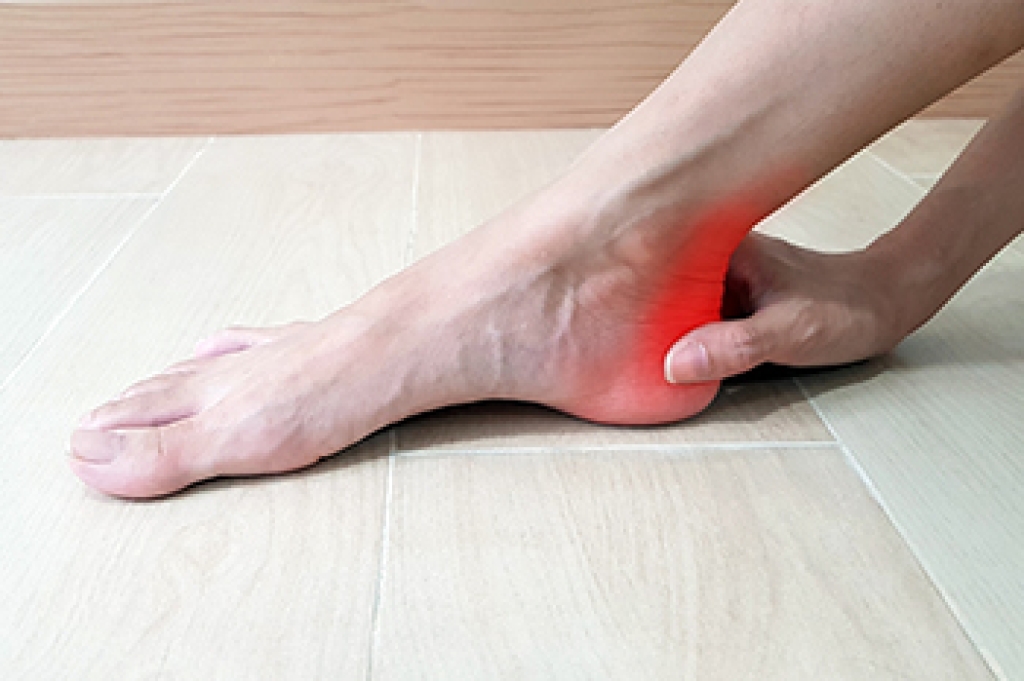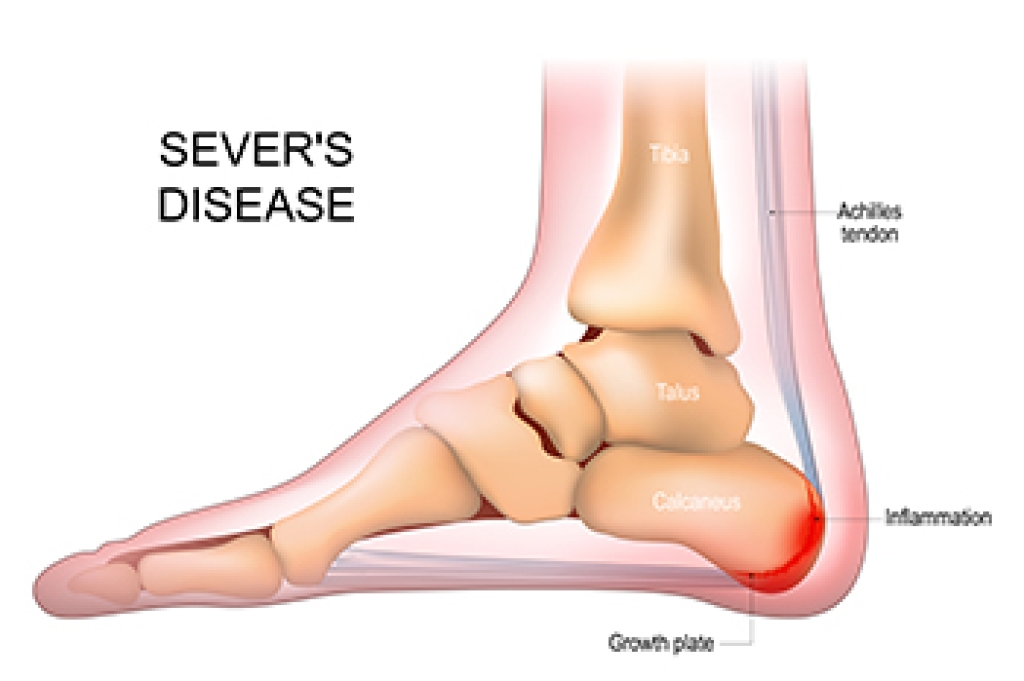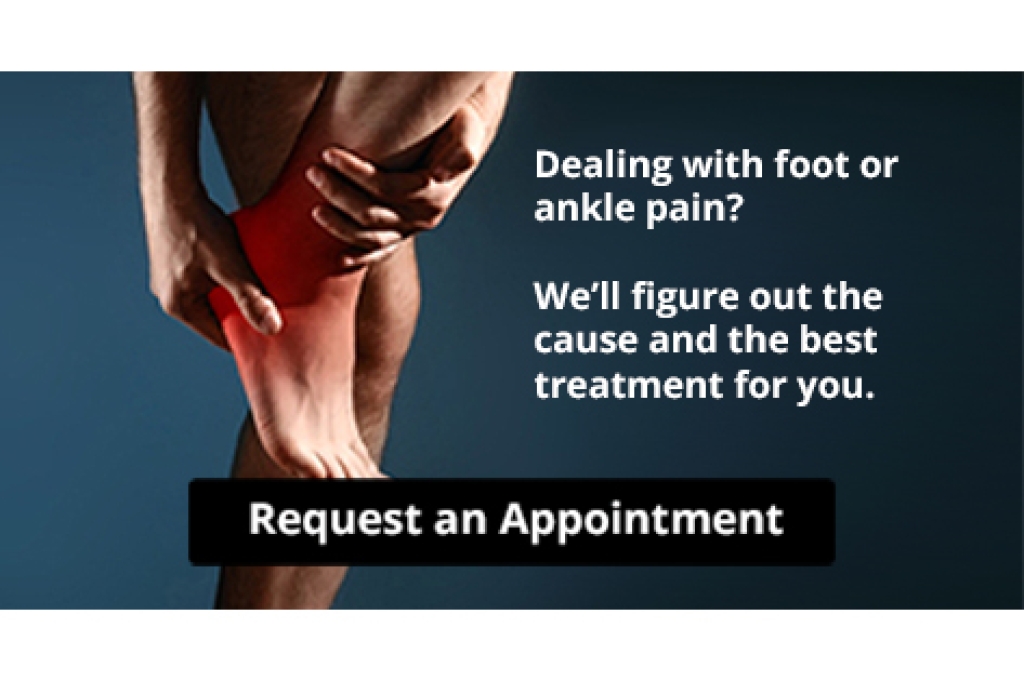Blog
Types and Risk Factors for Achilles Tendon Injuries

The long band of tissue at the back of the ankle, known as the Achilles tendon, allows the heel to lift when walking, running, or climbing stairs. When this tendon becomes irritated from overuse, Achilles tendinitis can develop, causing pain, stiffness, and swelling near the heel. If the tendon is repeatedly strained, the fibers can weaken, leading to degeneration called Achilles tendinosis. A sudden force to the foot or landing awkwardly from a jump can cause a tear, or rupture, which often produces sharp pain and makes it difficult to walk normally or stand on tiptoe. Risk of an Achilles tendon injury increases with running uphill, quick changes in direction, tight calf muscles, or wearing flip-flops or worn out shoes. A podiatrist can diagnose the injury, recommend supportive footwear, prescribe orthotics, or advise if surgery is necessary. If you have injured your Achilles tendon, it is suggested that you schedule an appointment with a podiatrist for a diagnosis and appropriate treatment.
Achilles tendon injuries need immediate attention to avoid future complications. If you have any concerns, contact Kentston Cripe, DPM of Roseville Foot & Ankle. Our doctor can provide the care you need to keep you pain-free and on your feet.
What Is the Achilles Tendon?
The Achilles tendon is a tendon that connects the lower leg muscles and calf to the heel of the foot. It is the strongest tendon in the human body and is essential for making movement possible. Because this tendon is such an integral part of the body, any injuries to it can create immense difficulties and should immediately be presented to a doctor.
What Are the Symptoms of an Achilles Tendon Injury?
There are various types of injuries that can affect the Achilles tendon. The two most common injuries are Achilles tendinitis and ruptures of the tendon.
Achilles Tendinitis Symptoms
- Inflammation
- Dull to severe pain
- Increased blood flow to the tendon
- Thickening of the tendon
Rupture Symptoms
- Extreme pain and swelling in the foot
- Total immobility
Treatment and Prevention
Achilles tendon injuries are diagnosed by a thorough physical evaluation, which can include an MRI. Treatment involves rest, physical therapy, and in some cases, surgery. However, various preventative measures can be taken to avoid these injuries, such as:
- Thorough stretching of the tendon before and after exercise
- Strengthening exercises like calf raises, squats, leg curls, leg extensions, leg raises, lunges, and leg presses
If you have any questions please feel free to contact our office located in Roseville, CA . We offer the newest diagnostic tools and technology to treat your foot and ankle needs.
Risk Factors for Gout

Certain factors increase the chance of gout, which causes severe pain in the feet. High uric acid levels place stress on the joints, especially around the big toe where gout attacks often begin. The problem occurs when the kidneys do not clear uric acid waste efficiently. Eating large amounts of foods high in purines, drinking alcohol, or consuming beverages with high fructose corn syrup can raise uric acid even more. Extra body weight increases pressure on the feet and can contribute to higher uric acid levels over time. Some health conditions, such as kidney problems or metabolic issues, also raise the likelihood of a painful gout flare-up in the toes or ankles. Wearing shoes that lack adequate support, or flip-flops to replace proper footwear, can place added pressure on an already irritated big-toe joint. A podiatrist can examine swollen joints, review flare patterns, and recommend supportive devices that help reduce strain on painful areas. If you have symptoms of gout, it is suggested that you make an appointment with a podiatrist for a diagnosis and help managing this painful condition.
Gout is a foot condition that requires certain treatment and care. If you are seeking treatment, contact Kentston Cripe, DPM from Roseville Foot & Ankle. Our doctor will treat your foot and ankle needs.
What Is Gout?
Gout is a type of arthritis caused by a buildup of uric acid in the bloodstream. It often develops in the foot, especially the big toe area, although it can manifest in other parts of the body as well. Gout can make walking and standing very painful and is especially common in diabetics and the obese.
People typically get gout because of a poor diet. Genetic predisposition is also a factor. The children of parents who have had gout frequently have a chance of developing it themselves.
Gout can easily be identified by redness and inflammation of the big toe and the surrounding areas of the foot. Other symptoms include extreme fatigue, joint pain, and running high fevers. Sometimes corticosteroid drugs can be prescribed to treat gout, but the best way to combat this disease is to get more exercise and eat a better diet.
If you have any questions, please feel free to contact our office located in Roseville, CA . We offer the newest diagnostic and treatment technologies for all your foot care needs.
Children and Sever’s Disease

Sever’s disease is a common condition that affects the heel of growing children, typically between the ages of 8 and fourteen. It occurs when the growth plate in the heel becomes inflamed, often due to repetitive stress from running, jumping, or participating in sports. Symptoms may include heel pain, walking on tip toes to avoid pressure, and difficulty engaging in sporting activities. Children may also experience swelling or tenderness at the back of the heel, which can worsen during physical activity. A podiatrist can accurately diagnose Sever’s disease, provide treatment to relieve pain, recommend supportive footwear or orthotics, and design stretching or strengthening exercises to reduce strain on the heel. If your child is experiencing heel discomfort or is having difficulty with sports, it is suggested that you schedule an appointment with a podiatrist who can offer effective relief tips.
Sever's disease often occurs in children and teens. If your child is experiencing foot or ankle pain, see Kentston Cripe, DPM from Roseville Foot & Ankle. Our doctor can treat your child’s foot and ankle needs.
Sever’s Disease
Sever’s disease is also known as calcaneal apophysitis, which is a medical condition that causes heel pain I none or both feet. The disease is known to affect children between the ages of 8 and 14.
Sever’s disease occurs when part of the child’s heel known as the growth plate (calcaneal epiphysis) is attached to the Achilles tendon. This area can suffer injury when the muscles and tendons of the growing foot do not keep pace with bone growth. Therefore, the constant pain which one experiences at the back of the heel will make the child unable to put any weight on the heel. The child is then forced to walk on their toes.
Symptoms
Acute pain – Pain associated with Sever’s disease is usually felt in the heel when the child engages in physical activity such as walking, jumping and or running.
Highly active – Children who are very active are among the most susceptible in experiencing Sever’s disease, because of the stress and tension placed on their feet.
If you have any questions, please feel free to contact our office located in Roseville, CA . We offer the newest diagnostic and treatment technologies for all your foot care needs.
Types of Avulsion Fractures in the Foot

An avulsion fracture occurs when a small piece of bone is pulled away by a tendon or ligament after a sudden force or twisting motion. In the foot, these injuries can affect several areas. The most frequent type involves the fifth metatarsal, located on the outer edge of the foot, often resulting from rolling the ankle outward. The calcaneus, or heel bone, can also experience an avulsion fracture at the back where the Achilles tendon attaches. Less common sites include the cuboid, navicular, and talus bones, where strong tendons can pull off small bone fragments during intense movements. Symptoms of avulsion fractures include swelling, bruising, and pain that worsens with walking or bearing weight. A podiatrist can diagnose the specific fracture location using imaging and determine whether immobilization or surgery is necessary to restore alignment and prevent chronic pain. If you have unexplained foot pain, it is suggested that you make an appointment with a podiatrist for a diagnosis and suggested treatment.
A broken foot requires immediate medical attention and treatment. If you need your feet checked, contact Kentston Cripe, DPM from Roseville Foot & Ankle. Our doctor can provide the care you need to keep you pain-free and on your feet.
Broken Foot Causes, Symptoms, and Treatment
A broken foot is caused by one of the bones in the foot typically breaking when bended, crushed, or stretched beyond its natural capabilities. Usually the location of the fracture indicates how the break occurred, whether it was through an object, fall, or any other type of injury.
Common Symptoms of Broken Feet:
- Bruising
- Pain
- Redness
- Swelling
- Blue in color
- Numbness
- Cold
- Misshapen
- Cuts
- Deformities
Those that suspect they have a broken foot shoot seek urgent medical attention where a medical professional could diagnose the severity.
Treatment for broken bones varies depending on the cause, severity and location. Some will require the use of splints, casts or crutches while others could even involve surgery to repair the broken bones. Personal care includes the use of ice and keeping the foot stabilized and elevated.
If you have any questions, please feel free to contact our office located in Roseville, CA . We offer the newest diagnostic and treatment technologies for all your foot care needs.

